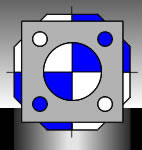Certifications:
ISO 9001
ISO 14001
BS EN 287
BS EN 288
ASMI IX (9)

LATEST NEWS - PEM Sheet Metal Ltd is now an ISO14001:2015 Environmental Management System approved company
PEM Sheetmetal has gained its accreditation to the prestigious ISO14001 Environmental Standard 6 months ahead of the anticipated date. This provides recognition for our achievements so far and a clear framework for future environmental improvements we have planned.ISO 14001
Recent Projects
Installation of cryogenic nitrogen storage. This saves approximately 12,000 miles of haulage of palletized gas packs per year
We have recently instigated a review of our compressed air system. Following the findings we have installed low power, reciprocating units to maintain air pressure and the high power screw type systems come on line only when required. We are now realising savings of 25 MWh per year or 10.75 tons of CO2.
PEM Sheet Metal considers the minimisation of our environmental impact to be a core priority. In 1999 we analysed our energy and material usage and instigated policies designed to mitigate detrimental environmental effects. PEM Sheet Metal is primarily a manufacturing sub contractor and as such the end use of our products is largely beyond our control and therefore lies within the scope of our customer’s environmental impact. We can however control our manufacturing of the products and it is these manufacturing processes that lie with in the scope of our environmental impact and policy. These policies may be summarised in the following;
Environmental Statement
PEM Sheet Metal Ltd and it’s employees recognise the importance of reducing our environment impact. We will strive to manufacture our customer’s products in the most energy and material efficient manor. PEM will evaluate and implement new technologies and processes with due regard to the environment. Every effort shall be made to eliminate waste. Any remaining waste shall wherever possible be recycled. Each year the ratio of our generated environmental impact against turnover shall be reduced.
Our environmental impact falls broadly into three categories.
Carbon Footprint and Energy
Our Carbon Footprint is primarily linked to our energy usage. In 1999 this split down to - in order - Welding, Lighting, Transportation, Electro-Motive devices (Machinery etc) and Heating. Since 1999 our energy usage for welding has remained constant but our production has more than doubled. The efficiency gains have been made by adopting solid state, inverter technologies within the welding equipment. Energy used for Lighting is at 90% of 1999 levels due to higher efficiency bulbs and the use of occupancy sensors. Heating energy has been reduced by 50% due to fitting high efficiency boilers and the use of switches on external doors that turn the heating off after 3 minutes if a door (such as in the loading bays) is left open. Transportation and Electro-Motive devices have increased slightly but by less than our increase in production. Since implementing our environmental policies we estimate our energy usage to have fallen to 75% of 1999 levels.
Waste and Pollutants
PEM Sheet Metal actually internally generates very little waste. Metallic waste (Scrap) is now 100% recycled. We only use about 150 litres of oils per annum and these are 100% recycled. Packaging materials received in are reused for the packaging of finished products. Paper is now shredded and also used as packaging. PEM does not generate any liquid or airborne pollutants other than from heating and transportation. Our remaining waste is of a ‘domestic’ nature and is at about the level of 4 normal UK households.
Consequential Pollutants - Light and Noise
Both light pollution and noise pollution can usually be considered to be of a subjective nature. We consider that our external noise pollution has remained static since 1999 as we have adopted newer, quieter machinery but our production has increased. Light pollution has increased as we have been forced to implement security lighting around our sites due to elevated levels of crime in our area. This lighting is highly energy efficient though and directs the light cones downwards to mitigate ‘Sky Glow’ rather than wastefully radiating in all directions like many other types of external lights.
Future improvements
To continue to abide to our Environmental Statement further improvements will need to be implemented each year. Currently we are considering the following;
Replacement of CNC punching machines with newer models with higher tooling densities. For various technical reasons this would allow us to implement ‘on the fly’ dissimilar part nesting algorithms. We estimate an 18% reduction in raw materials usage whilst maintaining the same production output. The same applies to the adoption of advanced laser cutting technologies.
Heating and Lighting interlocked to our alarm systems. We work flexible hours so it can happen that the heating comes on with a timer whilst a factory is unoccupied. It is also the case that staff leave manually controlled lights on after they have gone home. Interlocking to our alarm systems would turn off the heating and lights when it was set.
Occupancy sensors for water usage. Staff do not like the mechanically timed taps in washrooms. The infrared versions are prohibitively expensive. However taps are often left running. An option that has been proposed is the use of a standard cheap PIR occupancy sensors to activate solenoid valves to shut off the water flow when staff leave the washrooms.
Ducted heating from compressor motors. Our air compressors use outside air for cooling the motors. We could duct this warmed air back into the factory for heating in the winter.
Replacement of older style florescent lighting with LEDs.




















